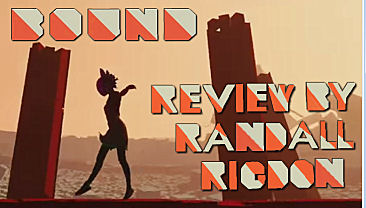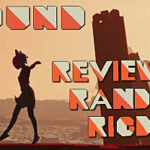
Bound Review
A deeply poignant, profoundly unique experience that is a definite must-play.







Genre: Action, Adventure
Release date: August 16, 2016
Without question, Bound is one of the most beautifully-crafted games ever made. It exemplifies flow, beauty and contemporary art with unparalleled sophistication and innovation, all while delivering consistent moments of awe from one second to the next. Honestly, I would consider Bound to be one my favorite games, period, if only it weren’t so unbelievably short.
Setting an intriguing mood, Bound begins with a calm, interactive sequence of a pregnant woman pacing alongside a shoreline. Although the narrative and story are far from spelled out, there is a simple sense of foreboding mystery that captivates and carries the player without ever portraying things in a direct way.
However, as you can probably tell from the screenshots, primary gameplay takes place far away from the quiet beachside. The player journeys into the abstract drawings in the pregnant woman’s notebook, upon which she quietly reflects as she progresses down the beach.
Inside the notebook exists a world of enormous color and incredible detail, surrounding the player in an environment that screams Surrealism and Modern Art to the fullest extent of their concepts. Quickly you’ll realize that literally every single object on screen animates and bounces in rhythm, gorgeously folding and molding around the player, providing a psychedelic, dreamlike sense that the environment is alive and breathing around you.
You play as a ballerina abstraction who has been graciously motion-captured by real-life ballerina Maria Udod and choreographed by choreographer Michał Adam Góral. The player movement that developer Plastic has accomplished is the first thing that will strike most players, featuring the smoothest maneuverability and ease of control that I’ve ever played on a platformer or a third-person game period. Plastic needs to outsource the work accomplished in Bound’s character movement for additional projects. It feels perfected enough to serve a number of creative projects for the better.
A “queen” character approaches you early on and tries to steer you away from the “monsters” that this world has in store for you. Your goal is to essentially run and dance your way through the abstract environments from point A to point B. There are a number of obstacles along the way that can slow your progress and by holding R2 the ballerina dances in place and creates a shield around her with her neon ribbon, allowing her to scurry her way through anything that gets in the way.
The most important thing to note, though, is that literally every movement of the player-character is captured as a ballet move. So as you run, jump, side-step, and climb – it’s all being translated as a ballerina pirouetting and balancing through the world, making the whole thing a symbiotic player/environment performance piece while giving significant context to otherwise routine platform mechanics.
Eventually, the ballerina premise takes on a deeper context, much more mature and dark than I was expecting, introducing a healthy realist contrast to an otherwise idealist art conceptualization.
At the end of every level, the ballerina collapses at the shrilling screams of a towering monster. During these sequences, the game enters into a small first-person sequence where the player has to walk around the slowly-forming childhood memories of the woman on the beach. From these scenes you can pick up the metaphorical messages of Bound, tackling the fears of approaching paternalism with themes of childhood escapism. The subject matter of Bound reminds me of challenges in my own childhood, and ultimately I felt these issues are handled maturely and meaningfully. This made Bound a very personal experience, and being that the childhood subject matter is made up of some general universalities, plenty of players are sure to have a similar experience.
Once the childhood memories sequences are over, the player then has to hold R2 to watch the ballerina dance away the harshness of the towering monster, another allusion of childhood escapism. Once the creature is depleted and dissolved by the exponentially evolving environment around the ballerina, the player is transported back to the woman and made to choose another page of the journal, which triggers another stage.
Every stage follows the same aforementioned sequence of events, but each environment is wonderfully different and provides the player with scene after scene of jaw-dropping surrealist animation and fantastical spectacles. Frankly, these are hard to describe without seeing them in motion, but from one corner to the next you’ll dangle from neon glowing silk ropes into transforming layers of bouncing cubes to seeing paper planes fly next to you while surf dancing on a floating carpet that wraps through the environment.
In a way, a lot of these sequences remind me of the open-ended visual spectrum of adventure game classic Obsidian. A large difference between these titles is the difficulty. Bound isn’t a particularly challenging game. In fact, the only way to die is to fall off the map; otherwise, everything else that attacks you is simply slowing your progress, forcing you to the ground screaming until you hold R2 and dance, allowing her to get right back up and continue. For the most part, this a fairly straightforward platformer, but there are moments of challenge, particularly when the environment is shifting and transforming around you intensely, usually making for some fairly disorienting environmental navigation.
This absence of challenge, however, is cohesive with the general relaxing, hypnotic nature of Bound , thanks to gorgeously ethereal composition accompanying the whole journey. Again, Bound feels more like an interactive performance piece with something unique to say than a straight-up game, so being able to flow through the whole thing with ease feels appropriate. The only true disappointment is just how short it is to complete altogether, offering only a handful of stages. My initial playthrough only took 2-and-a-half hours. As there are two separate endings, I quickly played through the game a second time to see the second, equally strong ending and clocked in at an hour and ten minutes.
Although this makes Bound unreasonably short for its fantastically sweet gameplay, there is an appreciation in its shortness, allowing you to savor the entire beautiful experience in a single sitting, perhaps with other friends to enjoy. Even so, it definitely feels as though another level or two would have filled the experience out. For everything Plastic achieved with Bound’s otherwise thoroughness, it definitely deserves much more content, hopefully in future DLC updates.
Ultimately Bound is a deeply poignant, profoundly unique experience that is a definite must-play. The transcendent interactive experience alone makes it a high recommendation to any fan of interactive art, despite its frustratingly short length. Either way Bound will remain one of my favorites for years to come.
+ Profoundly deep visual art and metaphorical narrative content + Gorgeously captured ballet choreography allowing for beautifully flowing platforming + Breathtaking environmental design with lots of amazing variance and dynamics – Heartbreakingly short |  |

Leave a Reply